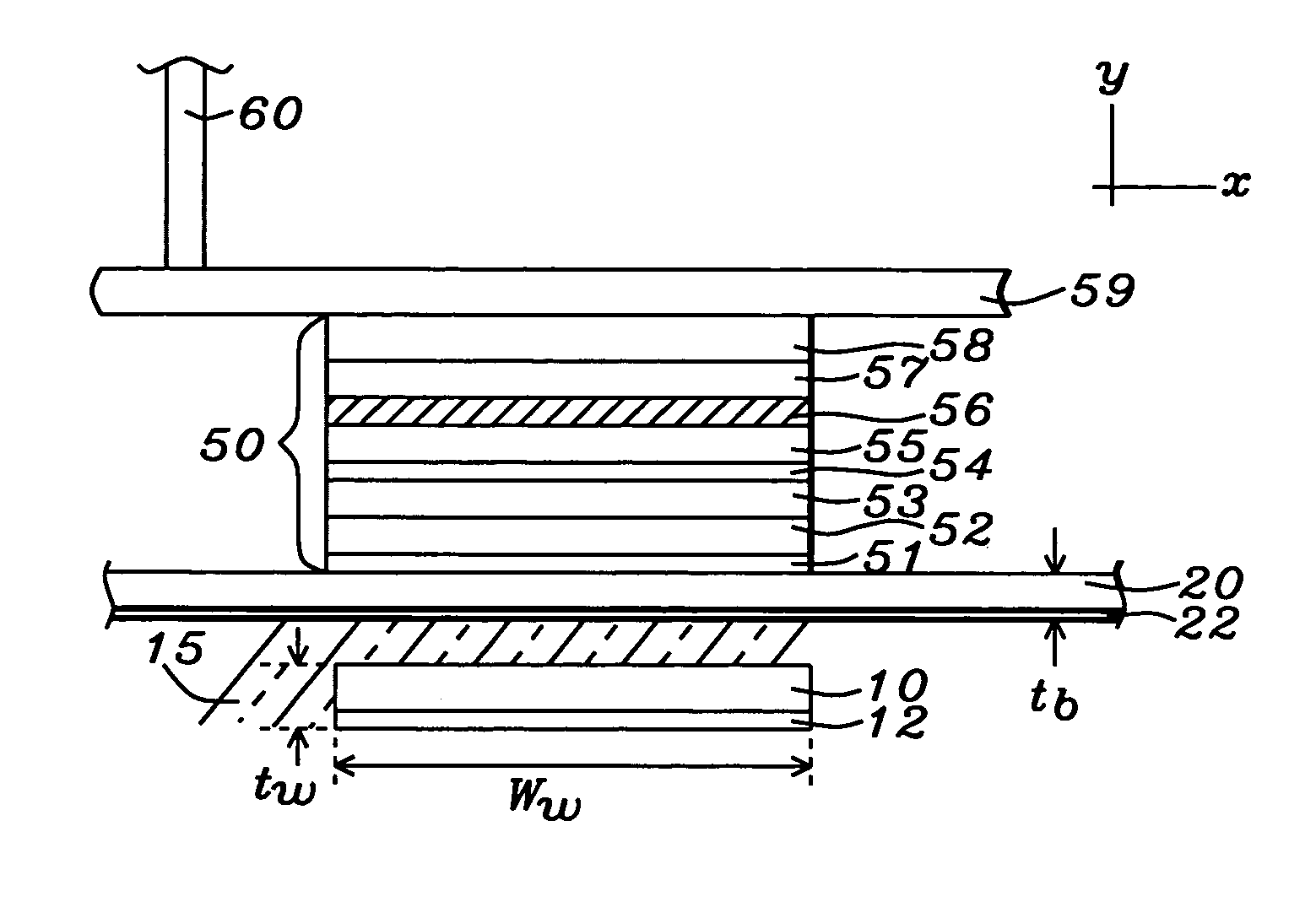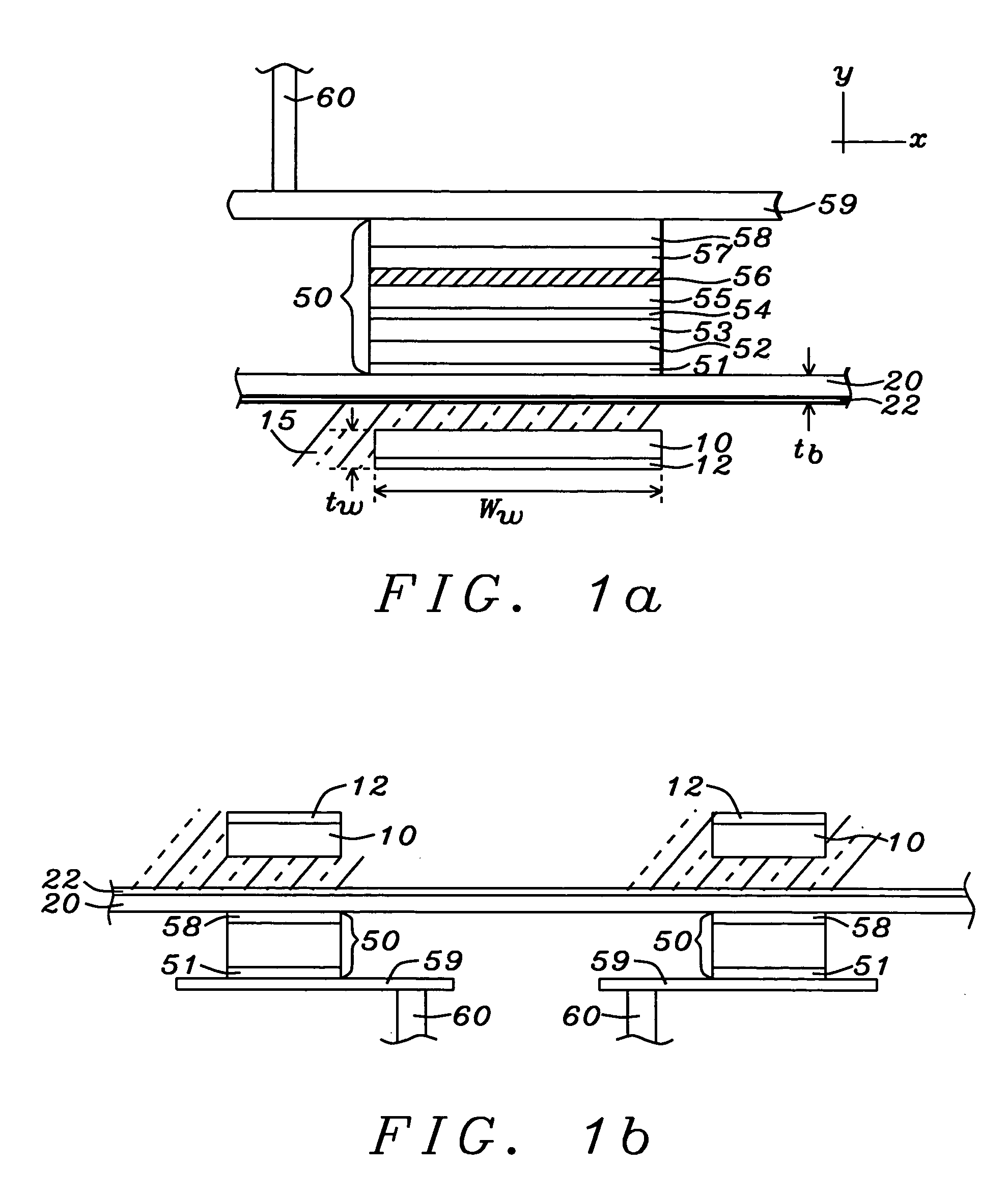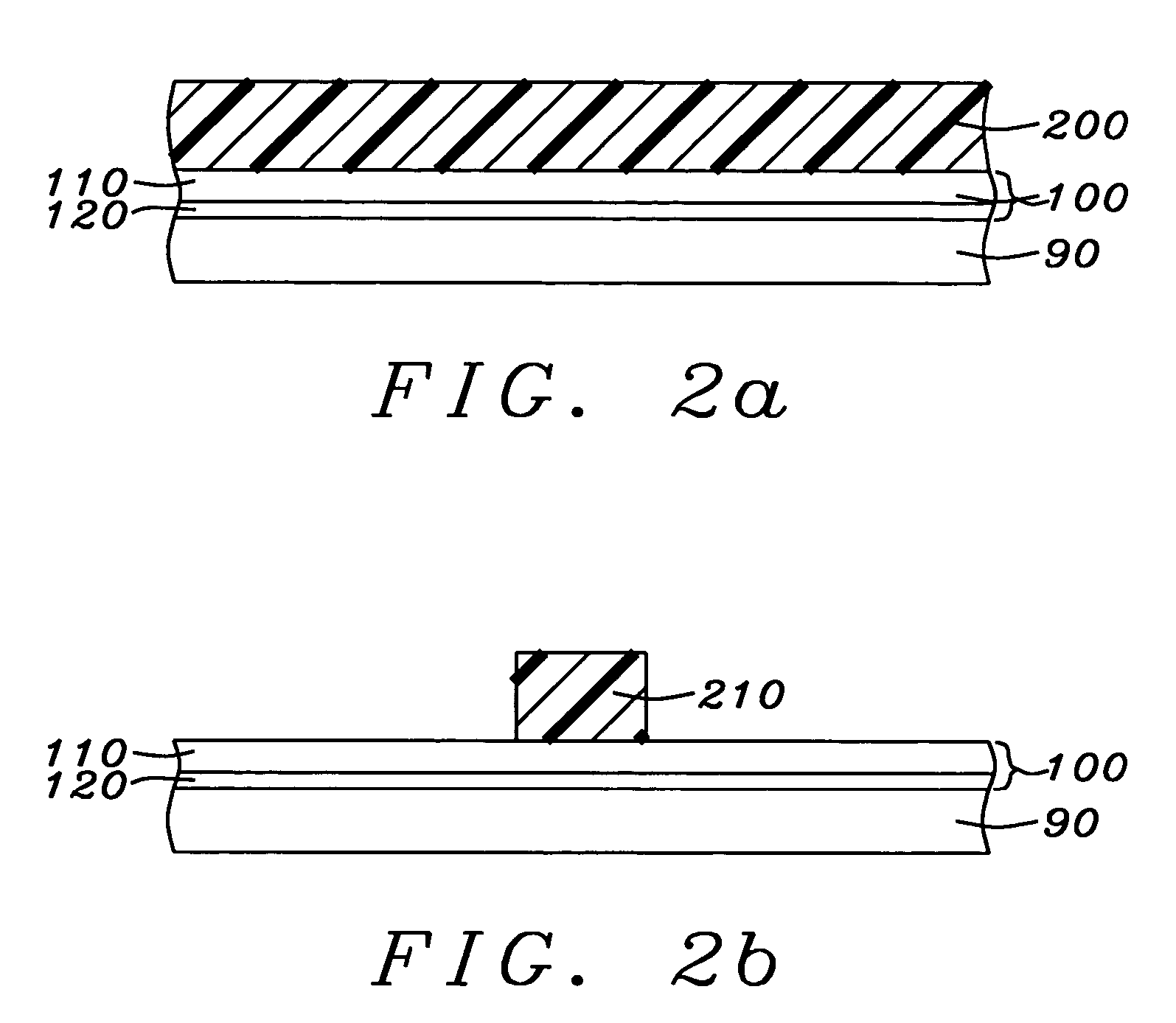Magnetic random access memory array with proximate read and write lines cladded with magnetic material
a random access memory array and magnetic material technology, applied in the direction of digital storage, semiconductor/solid-state device details, instruments, etc., can solve the problems of increasing the size of the required switching field, bringing with it its own problems, and causing significant problems
- Summary
- Abstract
- Description
- Claims
- Application Information
AI Technical Summary
Benefits of technology
Problems solved by technology
Method used
Image
Examples
Embodiment Construction
[0027]The preferred embodiment of the present invention is an MTJ MRAM cell comprising a multilayered cell element formed at an intersection of word and bit lines that are ultra-thin and magnetically clad so that smaller currents can still produce adequate switching fields at the location of the cell element free layer. The cell element may be formed above or below the intersecting lines, depending on the nature of the array to be fabricated.
[0028]Referring again to FIG. 1a, there is shown a vertical cross-sectional schematic view of the multi-layered MTJ cell element (50) formed above a vertically separated intersection of the ultra-thin, orthogonal word (10) and bit (20) lines of the invention. In this embodiment the cell element will be positioned above the intersection, but it can also be below the intersection. In accord with the invention, the intersecting lines are on the same side of the cell element. In horizontal cross-section, the shape of the cell is substantially circul...
PUM
 Login to View More
Login to View More Abstract
Description
Claims
Application Information
 Login to View More
Login to View More - R&D
- Intellectual Property
- Life Sciences
- Materials
- Tech Scout
- Unparalleled Data Quality
- Higher Quality Content
- 60% Fewer Hallucinations
Browse by: Latest US Patents, China's latest patents, Technical Efficacy Thesaurus, Application Domain, Technology Topic, Popular Technical Reports.
© 2025 PatSnap. All rights reserved.Legal|Privacy policy|Modern Slavery Act Transparency Statement|Sitemap|About US| Contact US: help@patsnap.com



